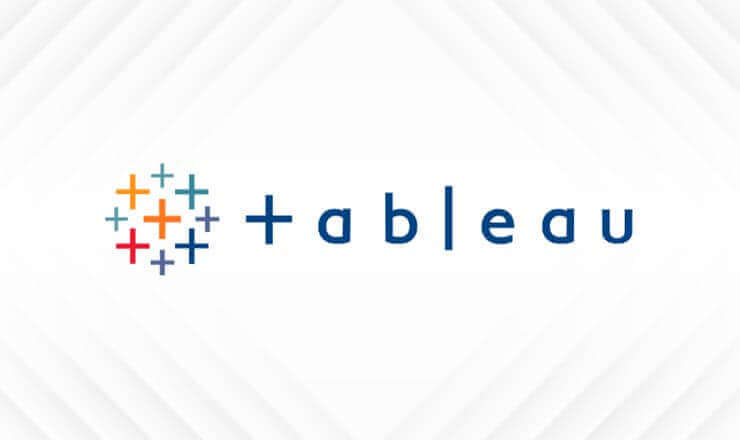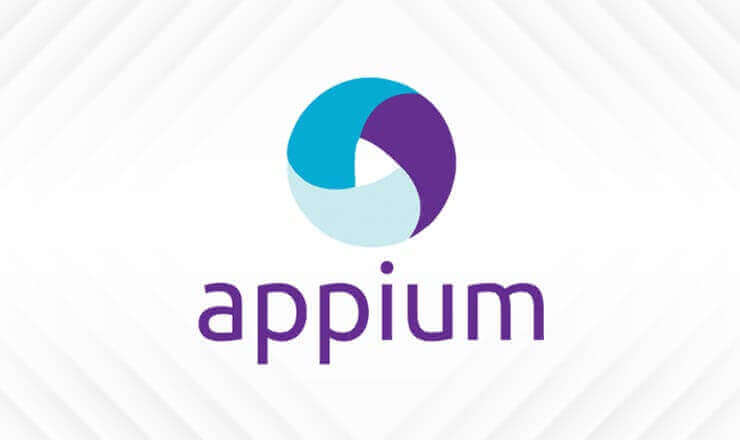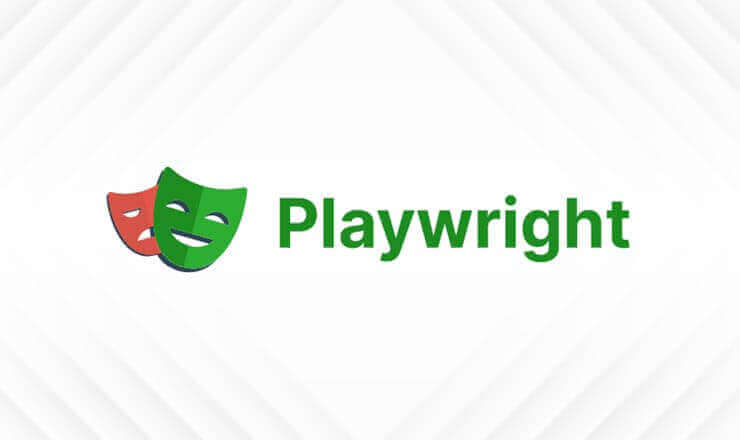Full Stack Mobile Developer
As technology advances and more people use mobile phones, there is an growing need for skilled mobile developers. TechPro Education's Mobile Developer course gives you the expertise to design and develop mobile apps for Android and iOS.
Summary
According to recent research, almost 90% of people today use mobile devices. Now mobile devices are essential in daily life and the business world. This reveals how important mobile application development is and the current need for experts in this field. In addition, 5G technologies, IoT, advances in artificial intelligence, an augmented reality have brought many security issues with them. All these things have led to a huge increase in the need for qualified mobile developers.
A mobile developer is a specialist who creates iOS, Android and other mobile platforms applications. These applications are usually designed for mobile phones, tablets and other devices people can carry around with them. You can create a mobile application from beginning to end quickly after completing the TechPro Education Mobile Developer course.
Considering how widely used mobile phones are in daily life today, it becomes clear how important mobile application development is. So how do these mobile applications, which almost all of us use, emerge at the end of a development process, and which essential elements are included?
Here are the vital elements that a mobile developer should master in the work process:
Back-end Development with Java: Full-stack mobile developers use Java as the programming language for back-end development. Java is famous for being versatile, the face that you can scale it up easily, and for its extensive support system. Developers use Java elements like Spring or Jakarta EE (formerly Java EE) to build the back-end internal structure, to handle server-side scientific thinking, to manage data storage and recovery, and to apply business rules. Java-based technologies such as Hibernate or JDBC are often connections are often used for database connections and data management.
Front-end Development with React (and React Native): The full-stack mobile developer uses React, a popular JavaScript library for building user connections, and for front-end development. React enables the creation of interactive UI elements that can be reused. With React, developers can build web-based connections for mobile applications that can be joined through a browser. Also, when Native-like mobile applications are needed, React Native, an extension of React, is used. React Native allows for the development of mobile applications for iOS and Android platforms using a single code base.
API Integration: A full-stack mobile developer creates and includes APIs (Application Programming Interfaces) to provide the link between the user-facing part of the application (the front end) and the server-side part (the back end).
Database Management: The ability to effectively manage databases is crucial for full-stack mobile developers. Mobile developers use relative database management systems such as MySQL, PostgreSQL or Oracle to design data schemes, write SQL queries and improve database performance. In addition, they use systems such as Hibernate to make database operations simpler.
User Interface Development: Full-stack mobile developers who are specialists in React or React Native for front-end development focus on creating user connections which have visual appeal and which are interactive. They use React's element-based architecture to build UI elements that can be reused throughout the application. Using React Native, they design mobile app connections with a native-like appearance, which perform well, and which offer a smooth user experience on various platforms.
Security and Authentication: Full-stack mobile developers include security measures and checking devices to keep the mobile application and its data safe. They handle user indefication, authorization, encryption, and secure data transfer between the front-end and back-end parts. They ensure the app full meets proper security requirements to protect user information and to reduce common weaknesses.
Deployment and DevOps: Full-stack mobile developers actively participate in using mobile applications within production environments. They program servers, set up hosting, manage internal structure, and ensure the application runs smoothly. Skill in DevOps practices and tools enables them to make processes of use automatic, to include continuous use and delivery elements within the app, and to effectively manage version control systems.
Full stack mobile developers can create feature-rich mobile applications using Java for back-end development and React (and React Native) for front-end development. This strategy means combining the front-end abilities of Java with the overall user connection development of React and the efficient cross-platform support of React Native. It enables codes to be reused, and creates smooth links between the front and back end, and the ability to develop apps for both web and native mobile platforms.
Job Title Targets
- - Full stack Mobile Developer
- - Mobile Developer
- - Android Developer
- - IOS Developer
- - Front-end Developer
- - Back-end Developer
Course Content
Basic Java
Basic Java covers learning the basic features and functions of the Java language. Topics such as the basic structure of Java, language features, data types, operators, loops, arrays, methods and so on are included in Basic Java. In addition, Basic Java often includes Java's object-oriented programming (OOP) features: classes, objects, inheritance, polymorphism, abstraction and encapsulation.
Lambda
A lambda expression is an easy way to represent a function with no name in Java. An unknown function lacks a name and can be handed as a value. It is a feature introduced in Java 8 as part of the improvements to functional programming.
Git-GitHub
GitHub is a platform for hosting Git storage which includes its features. Git is a command line application, whereas GitHub offers a Web-based graphic connection.
SQL
SQL is the abbreviation for Structured Query Language. The language is used to manage and control relation-based databases. SQL provides a standard link for interacting with databases and carrying out tasks such as creating, changing, and getting data.
Advanced Java
Advanced Java is everything beyond basic Java and refers to an expanded range of features and libraries developed on top of the basic Java programming languages. Generic Types, Multithreading, Serialisation and Deserialization, are a few of the tools and APIs that extend the abilities of Java for creating business-level applications.
JDBC
JDBC is an short form for Java Database Connection. An API (Application Programming Interface) enables Java applications to interact with databases and run database operations. JDBC provides classes and methods for connecting to databases, running SQL statements, getting and controlling data, and managing database activities
MongoDB
MongoDB is a popular open-source NoSQL database management system that provides flexible, high-performance document-focesed storage that can easily be scaled up,. Unlike traditional relation-based databases, MongoDB does not store data using tables and fields. Instead, BSON (Binary JSON) stores data in flexible, JSON-like documents with dynamic data schemes.
Hibernate
Hibernate is a Java system that helps with the development of database-aware Java applications. It is an open-source ORM (Object Relational Mapping) application that can be used anywhere. Hibernate implements the JPA (Java Persistence Architecture) rules.
Restful API (JAX-RS): Web Services - Restful API
A RESTful API is an application programme interface (API) structurak design that uses HTTP requests to access and use data.
Spring System
Spring is an open-source project. It has a large and active community that continuously provides feedback based on different real-world use cases. This has allowed Spring to develop effectively over a very extended period.
Design Pattern
A design pattern is a general solution to a frequently seen problem in software design that can be reused. It is a proven and well-documented method for solving particular design problems, offering an organized and effective way to develop software systems. Design patterns offer developers a common language and best practices for communicating and solving repeated design issues.
Algorithms
An algorithm in computer science is a step-by-step procedure or a set of rules for solving a specific problem or completing a particular task. It is a well-defined series of instructions designed to efficiently perform a computer action, to process data, or to solve a problem.
Advanced SQL
Beyond the basic elemtss of SQL, advanced SQL refers to more complex and stronger features and techniques. It consists of sophisticated query creation, data control, and improvement techniques that enable advanced and efficient database operations.
Unit Test
A unit test is a form of software testing that checks if individual software system elements or key parts are correct. It involves testing small, separate code sections, typically at a function or method level, to ensure they perform as expected.
Microservices With Spring Boot
Microservices enable the construction of complex systems from several cooperating elements. It loosely joins processes instead of loosely joining key parts, as Spring has always done at the level of parts.
HTML (Hypertext Markup Language)
HTML stands for "text-based markup”. The HTML standard creates the web page's structure and content. It provides a set of tags which define the various elements of a website, for example, the title, the paragraph, the link, the image, the table, and the form.
CSS (Cascading Style Sheets)
The Cascading Style Sheets (CSS) language describes how a web page should look. It lets developers change the letter style, colour, spacing, position, and the way that HTML elements respond, among other things.
Bootstrap
Bootstrap is an open-source CSS system that offers pre-built components and style to make the development of the front end simpler. It offers tables that respond, elements of the user screen (e.g., buttons, forms, bars for navigating) and Javascript plugins to create mobile-friendly and attractive sites with visual appeal.
JavaScript
Javascript is an open-source programming language which adds communication abilities and dynamic behaviour to websites. It allows front-end developers to build interactive features, to interact with users, to control a DOM model, to request APIs, and to create complex web apps.
SASS (Syntactically Awesome Style Sheets)
SASS is a CSS preprocessor that extends the abilities of CSS. It introduces features like variable elements, creating nests, mixins, and functions, which improve the efficiency and organization of writing CSS code. SASS files are organized within regular CSS files for to be compatible with different browsers.
Webpack
Webpack combines grouped data for web applications. It takes several systems, such as Javascript, CSS and other resources, and packages them into an improved file that can serve the user. Webpack supports various features, such as code split, hot module replacement, and the loader transfer of code.
React
React is a JavaScript library used for the development of user connections. It enables developers to construct UI elements that can be reused and efficiently manage the application's state. React employs an element-based architecture and a virtual DOM (Document Object Model) to efficiently display and update UI elements.
Redux Toolkit
Redux Toolkit is a well-viewed official package for working with Redux, a predictable state management library for JavaScript applications. Redux Toolkit makes the setup and use of Redux simpler by providing convenient abstractions, such as createSlice, createAsyncThunk, and configureStore, to handle state management more efficiently.
React Testing
React testing refers mainly to writing tests for a React element to make sure it works well, is reliable and that maintenance is regularly updated. React can be tested using different libraries and systems, such as Jest and the React testing library. These tools allow for testing of the React element's unit, the way it is included, and the connection with the user.
Deployment
Deployment refers to making a website or web application available to users on the internet. It involves programming servers, uploading code and elements like sound and pictures, setting up databases, and ensuring the proper functioning of the application in a production environment.
Docker
Docker is an open-source platform that allows developers to package applications and dependent elements into containers. Containers offer a well organized and separate platform for running applications, making it simpler to deploy and scale applications across various systems and locations.
AWS (Amazon Web Services)
AWS is Amazon's cloud computer platform with tools for web app development, internal structure management, and more. Services include storage, computer actions, databases, using computers with no servers, and content delivery.
React Native
React Native is an open-source system developed by Facebook for building native mobile applications using JavaScript and React, a popular JavaScript library for building user connections. It enables developers to create mobile apps that run on both iOS and Android platforms, sharing a significant portion of code between the two.
Timetable
Turkish Course Night Time Timetable
|
Day |
EST |
CET |
TSI |
|
Monday |
01:30 pm - 04:20 pm |
19:30 - 22:20 |
20:30 - 23:20 |
|
Tuesday |
01:30 pm - 04:20 pm |
19:30 - 22:20 |
20:30 - 23:20 |
|
Wednesday |
01:30 pm - 04:20 pm |
19:30 - 22:20 |
20:30 - 23:20 |
|
Thursday |
01:30 pm - 04:20 pm |
19:30 - 22:20 |
20:30 - 23:20 |
|
Friday |
11:30 am - 04:20 pm |
17:30 - 22:20 |
18:30 - 23:20 |
|
Saturday |
11:30 am - 04:20 pm |
17:30 - 22:20 |
18:30 - 23:20 |
|
Sunday |
- |
- |
- |
- EST : Eastern Standard Time
- CET : Central European Time
- TSI : Turkish Time
English Course Day Time Timetable
|
Day |
EST |
CET |
TSI |
|
Monday |
- |
- |
- |
|
Tuesday |
10:00 am.- 12:50 pm |
16:00 - 18:20 |
17:00 - 19:50 |
|
Wednesday |
10:00 am.- 12:50 pm |
16:00 - 18:20 |
17:00 - 19:50 |
|
Thursday |
10:00 am.- 12:50 pm |
16:00 - 18:20 |
17:00 - 19:50 |
|
Friday |
10:00 am.- 12:50 pm |
16:00 - 18:20 |
17:00 - 19:50 |
|
Saturday |
10:00 am - 02:20 pm |
14:00 - 20:20 |
17:00 - 21:20 |
|
Sunday |
10:00 am - 02:20 pm |
14:00 - 20:20 |
17:00 - 21:20 |
- EST : Eastern Standard Time
- CET : Central European Time
- TSI : Turkish Time
English Course Night Time Timetable
|
Day |
EST |
CET |
TSI |
|
Monday |
07:00 pm - 09:50 pm |
01:00 - 03:50 |
02:00 - 04:50 |
|
Tuesday |
07:00 pm - 09:50 pm |
01:00 - 03:50 |
02:00 - 04:50 |
|
Wednesday |
07:00 pm - 09:50 pm |
01:00 - 03:50 |
02:00 - 04:50 |
|
Thursday |
07:00 pm - 09:50 pm |
01:00 - 03:50 |
02:00 - 04:50 |
|
Friday |
- |
- |
- |
|
Saturday |
10:00 am - 02:20 pm |
16:00 - 19:20 |
17:00 - 21:20 |
|
Sunday |
10:00 am - 02:20 pm |
16:00 - 19:20 |
17:00 - 21:20 |
- EST : Eastern Standard Time
- CET : Central European Time
- TSI : Turkish Time
Note: Please note that schedules may change due to daylight saving time in summer and winter
FAQ
What are the different types of mobile development?
There are two main types of mobile development: native development and cross-platform development.
Native development means creating a separate app for each platform to fully use its features. Cross-platform development involves building a single app for several platforms, but it may be challenging to use platform-specific features.
What is cross-platform mobile development?
Cross-platform mobile development allows developers to create applications with a single code base for different platforms, such as Android and iOS. In this process, a cross-platform development framework is used, ensuring that the code written can run on several different platforms.
What are the benefits of cross-platform mobile development?
Cross-platform mobile development provides several benefits:
Reduced development costs: Cross-platform development frameworks get rid of the need to develop unique applications for each platform, resulting in cost savings.
Increased development speed: Cross-platform systems make the development process faster by providing a joint code base that can be used again and again across platforms.
Improved user experience: Cross-platform applications provide an improved user experience because they are compatible with several platforms.
What are the most popular cross-platform mobile development systems?
The most popular cross-platform mobile development systems are:
Xamarin: Xamarin is a system that uses C# to build Android, iOS and Windows applications.
React Native: React Native is a cross-platform development system that uses React to develop apps for Android and iOS.
Ionic: Ionic is a cross-platform development system that uses HTML, CSS, and JavaScript to build apps for Android and iOS.
Which cross-platform mobile development system is right for me?
The answer to this question will change depending on your needs and requirements. However, if you are already familiar with C#, Xamarin might be a good choice. If you are already familiar with React, React Native might be a good choice. If you are looking for an easy-to-learn system, Ionic can also be a good choice.
What are the most essential skills for a mobile developer?
The basic skills for a mobile developer are:
Programming language skills: The most popular programming languages for mobile development are Swift, Kotlin, Java, React, C#, HTML, CSS and JavaScript.
Mobile development system skills: The most popular mobile development systems for native development are Java, React Native, Xamarin, and Ionic.
User experience (UX) design skills: Mobile developers need strong design skills to create user-friendly and enjoyable applications.
User interface (UI) design skills: Mobile developers must have strong design skills to create attractive applications with visual appeal that are pleasing to look at.
Testing skills: Mobile developers must have good testing skills to make their apps are free of bugs and work as expected.
Version control skills: Mobile developers should be skilled at version control to work together effectively with other developers.
What are the challenges of mobile development?
The challenges of mobile development are:
Keeping up with the latest technologies: Since mobile technology is constantly developing, mobile developers need to keep up with these technologies and continuously update their knowledge.
Handling different screen sizes and picture qualities: Since mobile devices have different screen sizes and different picture quality needs, mobile developers need to consider this when developing applications.
Dealing with different operating systems: Since mobile devices run on various operating systems such as iOS, Android and Windows Phone, mobile developers must ensure that their apps will work with all leading operating systems.
What is the future of mobile development?
The future of mobile development looks promising. The demand for mobile apps continues to grow, resulting in rising salaries for mobile developers. Mobile developers are highly sought after as they create the apps that people use daily. 5G technologies, IoT, advances in artificial intelligence, augmented reality and security issues which have emerged at the same time have led to an huge increase in the need for qualified mobile developers. With current developments in mobile technology, the demand for skilled mobile developers will continue to increase.
How much does a Mobile developer earn on average?
The Average Salary of Full Stack Mobile Developer is $136k a year in the USA.

























